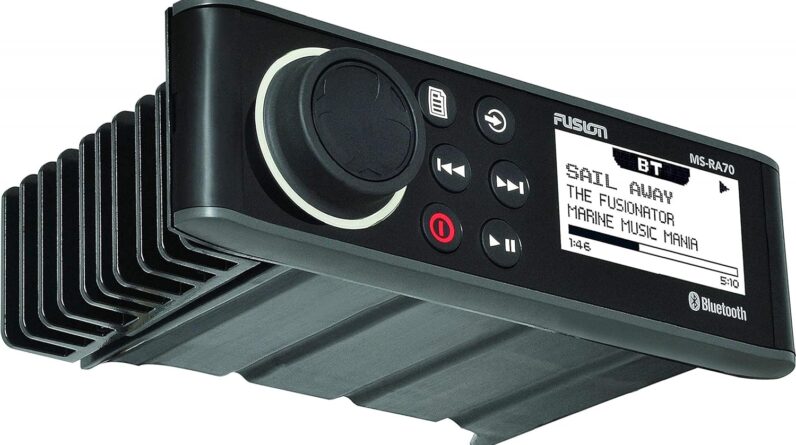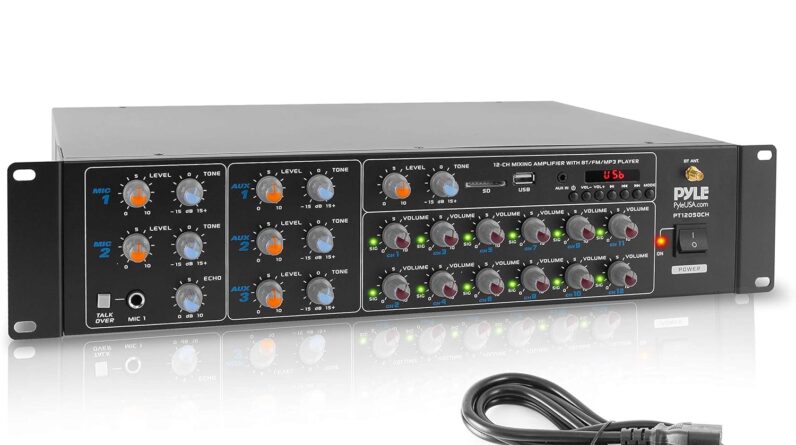
In this article, you will discover everything you need to know about setting up and connecting smart home appliances. Whether you’re a self-proclaimed technophobe or just new to the world of smart homes, we’ve got you covered. From step-by-step instructions on how to install your devices to troubleshooting common issues, you’ll gain the confidence and knowledge to transform your house into a cutting-edge, automated haven. Say goodbye to fumbling for light switches and hello to a seamlessly connected home that adapts to your needs. So grab your smartphone, sit back, and get ready to embark on this exciting journey of smart home innovation.
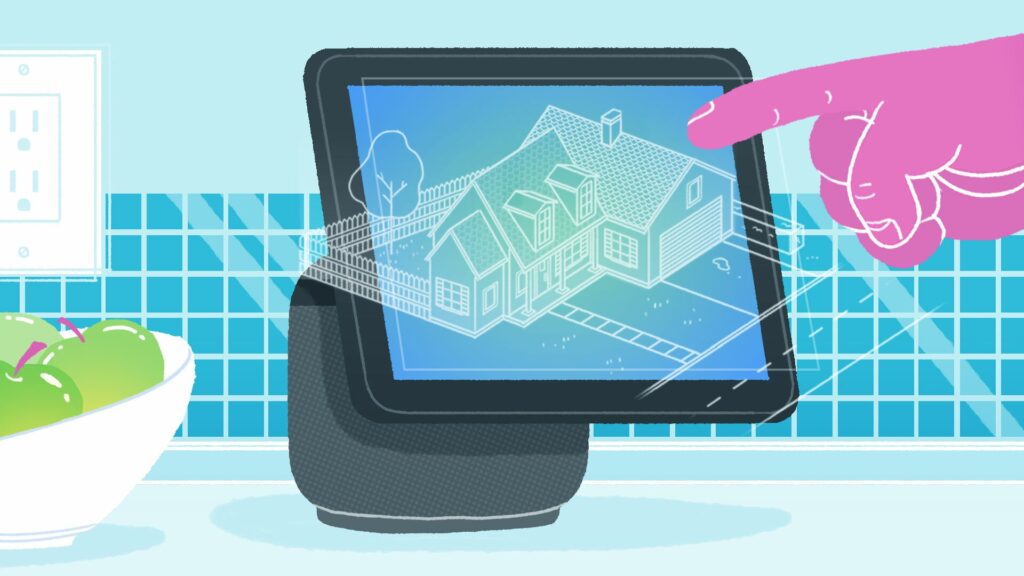
This image is property of i.pcmag.com.
Understanding Smart Home Appliances
Defining Smart Home Appliances
Smart home appliances are devices that are connected to the internet and can be controlled remotely using a smartphone, tablet, or another smart device. These appliances are equipped with sensors, artificial intelligence, and connectivity features that allow them to communicate with each other and with the user. By integrating these appliances into a smart home system, you can enjoy a more convenient, efficient, and automated living experience.
Benefits of Smart Home Appliances
There are numerous benefits to using smart home appliances. Firstly, they provide convenience by allowing you to control and monitor your appliances remotely. Whether you’re at work or on vacation, you can adjust the temperature, turn on/off lights, or even start a load of laundry with just a few taps on your smartphone. Additionally, smart appliances often come with advanced features such as energy management, which can help you save money on utility bills by optimizing energy usage. Moreover, with the ability to integrate with voice assistants like Amazon Alexa or Google Assistant, smart appliances offer hands-free control, making your daily tasks even easier.
Types of Smart Home Appliances
Smart home appliances come in various types, catering to different aspects of your household. Some common examples include:
-
Smart Thermostats: These devices allow you to control the temperature of your home remotely and learn your temperature preferences to optimize energy usage.
-
Smart Lighting: With smart lighting systems, you can control the brightness, color, and schedule of your lights. They can also be integrated with motion sensors for automated lighting.
-
Smart Security Systems: These appliances include features like surveillance cameras, door/window sensors, and smart locks, allowing you to monitor and secure your home from anywhere.
-
Smart Kitchen Appliances: This category encompasses a wide range of appliances such as refrigerators, ovens, and coffee makers that can be controlled and monitored through your smartphone or voice commands.
-
Smart Home Entertainment: Devices like smart TVs, speakers, and streaming devices offer seamless integration with your smart home system, allowing you to control your entertainment experience effortlessly.
Preparing Your Home for Smart Appliances
Assessing Your Home Wi-Fi Network
Before installing any smart appliances, it’s crucial to assess the strength and coverage of your home Wi-Fi network. Smart appliances require a stable and reliable internet connection to function optimally. You can start by checking the signal strength in different areas of your home. If you find any dead zones or areas with weak signals, consider investing in Wi-Fi range extenders or mesh systems to improve coverage. It’s also recommended to have a high-speed internet plan to ensure smooth and seamless operation of your smart appliances.
Ensuring Compatibility with Smart Appliances
While selecting smart appliances, it’s essential to check for compatibility with your existing smart home system or hub. Some appliances might require specific protocols, such as Zigbee or Z-Wave, to connect and function properly. Ensure that the appliances you choose are compatible with your smart home hub or the platform that you intend to use for controlling multiple devices. Checking compatibility beforehand will save you from disappointment and the hassle of returning incompatible products.
Creating a Smart Home Hub
A smart home hub serves as a central control unit for all your smart appliances. It acts as a bridge between various devices and allows you to control them from a single interface. There are several options available for smart home hubs, ranging from voice assistants like Amazon Echo or Google Home to dedicated hub devices. When selecting a hub, consider the compatibility with your appliances, ease of use, and capability to integrate with other smart devices. Follow the manufacturer’s instructions to set up and connect the hub to your Wi-Fi network before proceeding.
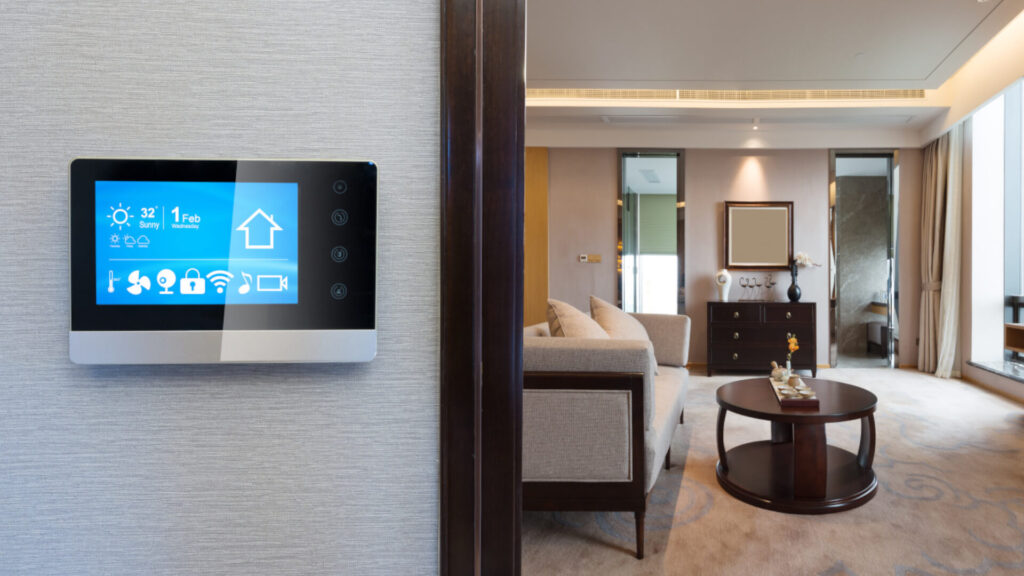
This image is property of www.build-review.com.
Selecting and Purchasing Smart Appliances
Identifying Your Needs and Priorities
Before diving into the world of smart appliances, take some time to identify your specific needs and priorities. Assess which aspects of your household you would like to automate or control remotely. Consider factors such as energy efficiency, convenience, and security. For example, if you want to reduce energy consumption, prioritize smart appliances that offer advanced energy management features. Similarly, if home security is a concern, focus on smart security systems. Having a clear understanding of your needs will help you choose the right appliances and avoid unnecessary expenses.
Researching and Comparing Smart Appliance Options
Once you have identified your needs, it’s time to research and compare the available smart appliance options. Read product reviews and check the manufacturer’s websites for detailed specifications and features. Look for appliances that not only meet your requirements but also have a good reputation for reliability and performance. Consider factors such as compatibility, ease of installation, and after-sales support. It’s also a good idea to compare prices across different retailers to ensure you’re getting the best deal.
Considering Integration and Expansion Possibilities
When selecting smart appliances, it’s important to consider integration and expansion possibilities. Choose appliances that are compatible with your chosen smart home platform or hub, as this will allow you to control and automate multiple devices seamlessly. Additionally, consider the potential for future expansion. Evaluate whether the chosen appliances can integrate with other smart devices that you might want to add in the future. This will ensure that your smart home system can grow and adapt to your changing needs without requiring major upgrades or replacements.
Setting Up the Smart Home Hub
Choosing the Right Smart Home Hub
Selecting the right smart home hub is crucial for seamless integration and control of your smart appliances. Consider factors such as compatibility, ease of use, and the number of supported devices. If you already have a voice assistant like Amazon Echo or Google Home, check if it offers hub capabilities. Alternatively, dedicated smart home hub options are available in the market, supporting various protocols and allowing control through a dedicated app or voice commands. Carefully read the product descriptions and reviews to choose a hub that best fits your requirements.
Connecting the Smart Home Hub to your Wi-Fi Network
Once you have chosen a smart home hub, follow the manufacturer’s instructions to connect it to your Wi-Fi network. Typically, this involves downloading the hub’s app, creating an account, and syncing the hub with your Wi-Fi network. Ensure that your Wi-Fi network is stable and has a strong signal during the setup process. The app will guide you through the necessary steps, which may include scanning a QR code or entering specific network details. Once connected, test the hub’s connectivity by controlling a compatible device and ensuring it responds as expected.
Configuring Settings and Preferences
After successfully connecting the smart home hub, take some time to configure the settings and preferences according to your needs. Most hubs allow customization of options such as device names, room assignments, and automation routines. You can also set up notifications for specific events, such as motion detection or appliance status updates. Explore the hub’s settings menu and familiarize yourself with the available features. Adjust the settings as per your preferences to create a personalized smart home experience that suits your lifestyle.
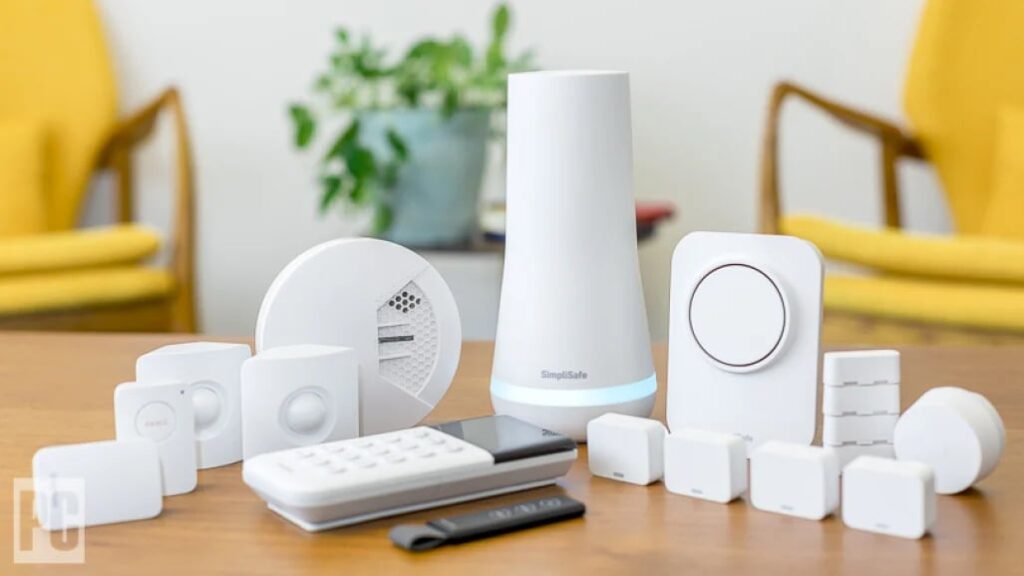
This image is property of i.pcmag.com.
Preparing and Configuring Smart Appliances
Unboxing and Checking for Damages
When you receive your smart appliances, it’s important to unbox them carefully and check for any damages or defects. Inspect each appliance for any visible signs of damage, such as dents, scratches, or broken parts. Ensure that all accessories and components mentioned in the packaging are present. If you notice any issues, contact the manufacturer or retailer immediately to arrange for a replacement or repair. It’s crucial to address any damages before proceeding with the installation or configuration process.
Installing Any Required Mobile Apps
To set up and control your smart appliances, you will need to install the manufacturer’s dedicated mobile app on your smartphone or tablet. Visit the app store specific to your device’s operating system and search for the app using the appliance’s name or brand. Download and install the app, following the on-screen instructions. Make sure to grant the necessary permissions, such as accessing your device’s camera or location services, as required by the app. Once installed, open the app and sign in or create an account, if prompted.
Creating Individual User Accounts
Most smart appliances allow multiple users to have individual accounts for personalized control and access. Creating individual user accounts ensures that each family member has their preferences and settings. Some appliances also provide different levels of access, such as administrators and guests, allowing you to control who can modify settings or access certain features. Use the manufacturer’s app or web portal to create user accounts, following their guidelines and instructions. This will enable personalized control and monitoring for each user within your smart home ecosystem.
Connecting Smart Appliances to the Home Network
Connecting Appliances to the Smart Home Hub
After installing the necessary mobile apps and creating user accounts, it’s time to connect your smart appliances to the smart home hub. Different appliances may have different pairing methods, so refer to the manufacturer’s instructions or the app’s guidance for each specific device. Generally, this involves putting the appliance into pairing or setup mode and using the mobile app to initiate the connection. Follow the on-screen instructions, which may include scanning a QR code, entering a unique identifier, or using a nearby proximity method like Bluetooth. Once connected, the app should recognize and display the appliance in your device list.
Configuring Wi-Fi or Ethernet Connections
Typically, smart appliances require a Wi-Fi connection to function but some appliances also offer Ethernet connectivity options. Use the app or the appliance’s settings to configure the network connection method as per your preference and the available options. For Wi-Fi setup, scan for available networks, select your home network, and enter the Wi-Fi password as prompted. Make sure to choose a network with good coverage and stable connectivity. If you choose an Ethernet connection, ensure that you have an available Ethernet port near the appliance. Connect the Ethernet cable and follow any additional steps mentioned to complete the setup.
Troubleshooting Connectivity Issues
In case you encounter any connectivity issues while connecting your smart appliances to the home network, there are a few troubleshooting steps you can follow. Firstly, ensure that your Wi-Fi network is functioning properly and that other devices can connect without issues. Check if your smart home hub is within range of the Wi-Fi router and that there are no obstructions causing signal interference. Restart both the Wi-Fi router and the smart home hub to refresh the connection. If the problem persists, refer to the manufacturer’s troubleshooting guide or contact their customer support for further assistance.
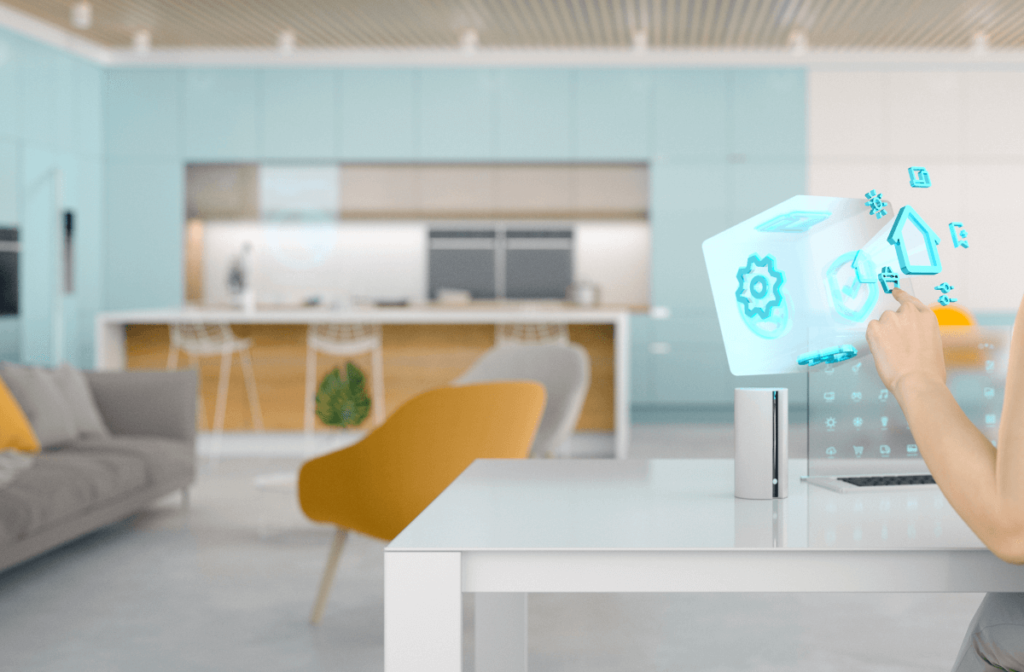
This image is property of www.pert.me.
Securely Connecting Smart Appliances
Setting Up Secure Passwords
When connecting smart appliances to your home network, it’s crucial to set up secure passwords to prevent unauthorized access. Avoid using default passwords or commonly used phrases, and instead, create strong, unique passwords for each appliance. Consider using a mixture of letters, numbers, and special characters to enhance the password’s strength. Additionally, enable any available password management features offered by the smart appliances or the hub. Regularly update your passwords and avoid sharing them with others to maintain the security of your smart home system.
Enabling Two-Factor Authentication
Two-Factor Authentication (2FA) adds an extra layer of security to your smart home system by requiring additional verification during login. Enable 2FA whenever possible, as it helps protect against unauthorized access even if your password is compromised. Typically, 2FA involves receiving a verification code on your registered mobile device or email address after entering your password. Follow the instructions provided by the manufacturer’s app or website to enable this feature for your smart appliances and hub. Remember to store backup codes securely in case you face difficulties accessing your registered device.
Securing the Wi-Fi Network
Securing your Wi-Fi network is crucial to ensure the overall security of your smart home system. Start by changing the default Wi-Fi network name (SSID) and password to prevent unauthorized access. Enable Wi-Fi encryption methods such as WPA2 or WPA3, which provide strong security for your network. Additionally, consider creating a separate guest network to isolate devices with limited access from your primary network. Regularly update your Wi-Fi router’s firmware to ensure that any potential security vulnerabilities are patched. Following these practices will help safeguard your smart home appliances and prevent unauthorized access to your network.
Exploring Integration and Automation Possibilities
Syncing Smart Appliances with Voice Assistants
One of the significant benefits of smart appliances is their ability to sync with popular voice assistants like Amazon Alexa or Google Assistant. Syncing your appliances with voice assistants allows you to control them using voice commands, providing a hands-free and convenient experience. Follow the manufacturer’s instructions to integrate your smart appliances with your chosen voice assistant. Once set up, you can control various aspects of your appliances simply by giving voice commands, such as adjusting the thermostat, turning on lights, or brewing a cup of coffee.
Creating Scenes and Routines
Scenes and routines are powerful features that allow you to automate multiple actions with a single command or trigger. For example, you can create a “Good Morning” scene that turns on specific lights, adjusts the thermostat, and starts brewing coffee when you say, “Good morning” to your voice assistant. Similarly, you can set up a routine that automatically turns off all lights and locks the doors when you leave home. Explore the settings and options provided by your smart home hub or app to create customized scenes and routines that suit your daily routines and preferences.
Exploring Third-Party Integrations
Apart from voice assistants, smart appliances often offer integration with various third-party devices and services, opening up endless possibilities for automation and control. For example, you can integrate your smart security system with a home monitoring service for enhanced security. Some appliances even offer integration with popular platforms like IFTTT (If This Then That), which enables you to create custom applets that link different devices and services together. Take the time to explore the available integrations and consider how they can enhance your smart home experience by providing seamless connectivity with other devices and services you use regularly.
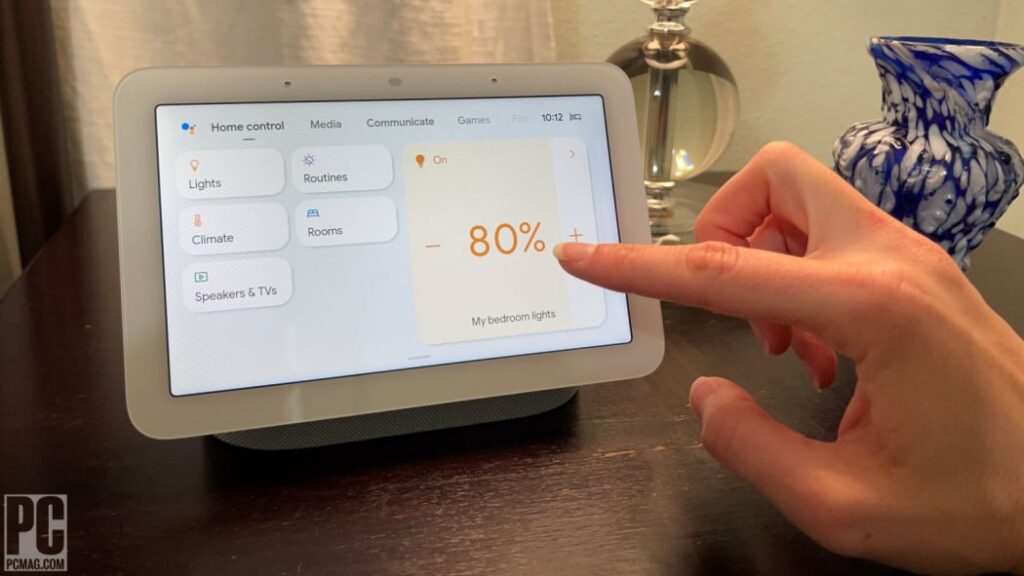
This image is property of i.pcmag.com.
Managing and Controlling Smart Appliances
Using Mobile Apps for Remote Control
Mobile apps provided by the manufacturers are the primary means of controlling and managing your smart appliances remotely. These apps offer intuitive interfaces that allow you to access and control various features of your appliances from anywhere. Depending on the appliance, you can adjust temperature settings, monitor energy usage, or receive notifications on your smartphone or tablet. Familiarize yourself with the app’s layout, settings, and options specific to each appliance to make the most of their functionalities. Remember to keep the apps updated to benefit from any enhancements or bug fixes released by the manufacturers.
Accessing and Monitoring Appliances from Anywhere
One of the key advantages of smart appliances is the ability to access and monitor them from anywhere with an internet connection. Whether you’re at work or on vacation, you can use the mobile app to check the status of your appliances and control their functionalities remotely. For example, you can turn on the air conditioner to cool your home before you arrive or check if you left any lights on before going to bed. This level of control and monitoring offers convenience and peace of mind, making your daily life more comfortable and efficient.
Understanding Energy Management Features
Many smart appliances come equipped with energy management features that help you monitor and optimize your energy usage. Use the mobile app or the appliance’s dedicated interface to access these features and keep track of energy consumption. Some appliances provide real-time energy usage data, allowing you to identify trends and make adjustments to reduce your energy footprint. You can set schedules or triggers to automatically turn off appliances during specific times or when certain conditions are met. By utilizing these energy management features, you can save money on utility bills and contribute to a more sustainable future.
Troubleshooting Common Issues
Resolving Connectivity Problems
While smart home appliances offer convenience, connectivity issues can sometimes arise. If you encounter connectivity problems, start by ensuring that all devices are within the range of your Wi-Fi network and that there are no physical obstructions blocking the signal. Restarting the devices and the Wi-Fi router can often resolve temporary connectivity glitches. Make sure that your devices and router have the latest firmware updates installed, as these updates often address connectivity-related issues. If the problem persists, refer to the manufacturer’s troubleshooting guide or contact their customer support for further assistance.
Updating Firmware and Software
To ensure optimal performance and security, it’s essential to keep your smart appliances’ firmware and the accompanying mobile apps up to date. Manufacturers regularly release updates that may include bug fixes, performance enhancements, or new features. Keep an eye out for notifications or prompts within the app that indicate the availability of firmware or software updates. Follow the recommended steps to download and install these updates to ensure that your appliances are running the latest version. Regular updates not only improve functionality but also address any known vulnerabilities, keeping your smart home ecosystem secure.
Seeking Manufacturer Support
If you encounter any issues that cannot be resolved through basic troubleshooting or software updates, don’t hesitate to seek support from the manufacturers. Most manufacturers offer customer support through various channels, such as phone, email, or live chat. Contact the manufacturer’s support team, providing them with detailed information about the issue you’re facing. They will guide you through advanced troubleshooting steps or arrange repairs or replacements, if necessary. Remember to provide any necessary documentation, such as purchase receipts or warranty information, when seeking support to ensure a smooth resolution to your issue.


